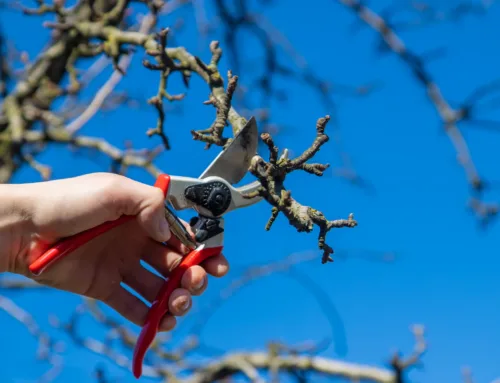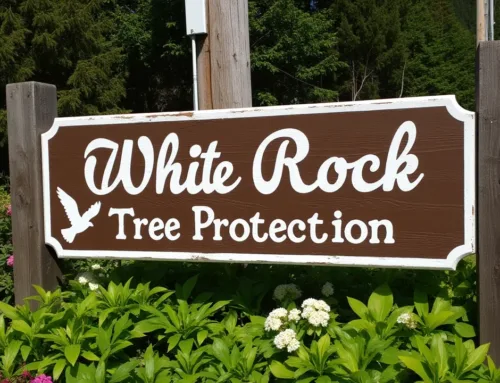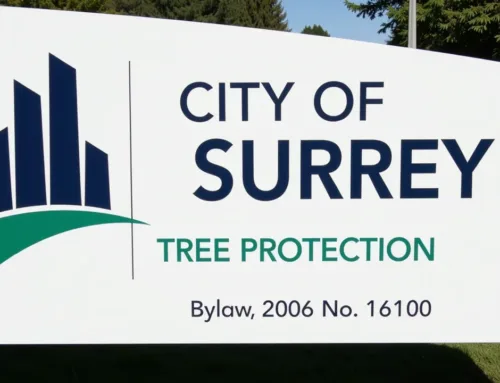Top 3 Tree Pests This Spring: British Columbia’s Main Culprits
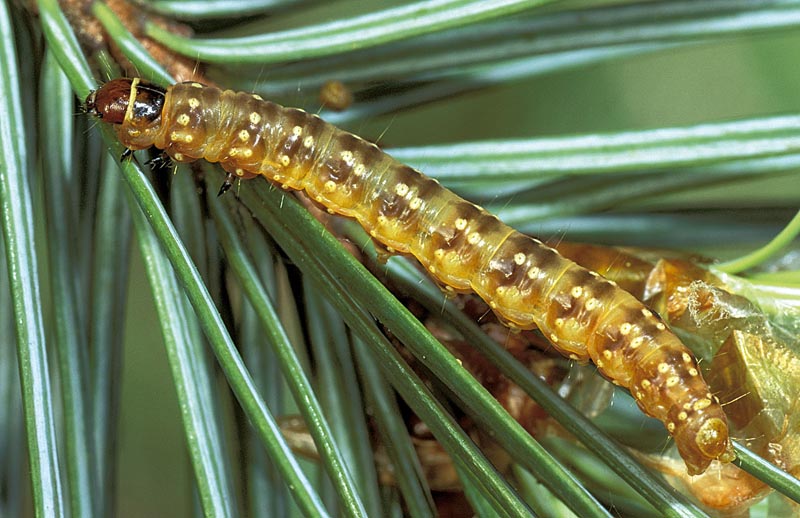
Spring in British Columbia brings renewed growth to our forests and gardens, but it also marks the return of several destructive tree pests. These insects can cause significant damage if left unchecked. Here are the three most problematic tree pests that emerge during BC’s spring months.
1. Western Spruce Budworm
The Western Spruce Budworm (Choristoneura occidentalis) is one of BC’s most damaging forest pests, primarily attacking Douglas-fir, true firs, and spruce trees.
Signs of Infestation:
- Brown, dead branch tips that appear scorched
- Webbed or chewed needles
- Reddish-brown caterpillars (12-25mm when mature)
- Thinning tree crowns
These caterpillars emerge in spring from overwintering sites and begin feeding on new buds and developing needles. A heavy infestation can defoliate large sections of forest, weakening trees and making them vulnerable to disease and other pests.
Control Methods:
- Natural predators like birds and parasitic wasps help control populations
- Bacterial insecticides containing Bacillus thuringiensis (Bt) can be effective
- For severe outbreaks, targeted aerial spray programs may be implemented by forestry officials

Mature larva of western spruce budworm on a Douglas-fir shoot.
Dion Manastyrski Centre de foresterie du Pacifique, Victoria (Colombie-Britannique) / Pacific Forestry Centre, Victoria, British Columbi
2. Douglas-fir Beetle
The Douglas-fir Beetle (Dendroctonus pseudotsugae) targets mature and weakened Douglas-fir trees across BC forests.
Signs of Infestation:
- Reddish-brown boring dust in bark crevices
- Pitch tubes (small globs of resin) on the trunk
- Yellowing or reddening foliage
- S-shaped galleries under the bark
These beetles become active in spring when temperatures warm. The females bore into tree trunks and create egg galleries in the inner bark. They also introduce blue-stain fungi that block water transport in the tree.
Control Methods:
- Remove windthrown or weakened trees before beetles emerge
- Use pheromone traps to monitor beetle activity
- Apply methylcyclohexenone (MCH) repellent to protect healthy trees
- For high-value trees, spray trunks with appropriate insecticides before beetle flight period
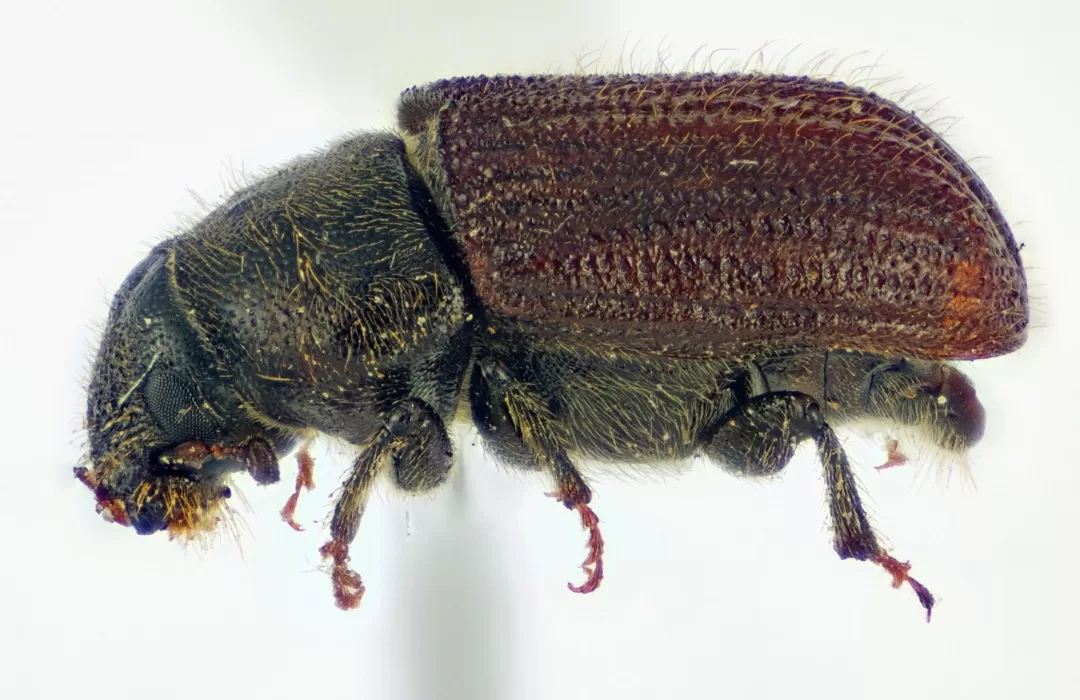
Image credit: Joseph Benzel, Screening Aids, USDA APHIS PPQ, Bugwood.org
3. Pine Needle Cast Fungi
While not an insect, Pine Needle Cast fungi (including Lophodermium and Elytroderma species) are significant spring pests affecting various pine species in BC.
Signs of Infestation:
- Yellowing or browning of needles, starting at the tips
- Black fruiting bodies visible on infected needles
- Premature needle drop
- Infection typically begins on lower branches and moves upward
These fungal diseases infect needles during wet spring weather. The fungal spores germinate on needle surfaces, eventually causing them to die and fall off. While rarely fatal to mature trees, repeated infections can weaken trees and reduce growth.
Control Methods:
- Improve air circulation by thinning trees and removing lower branches
- Avoid overhead watering in landscape settings
- Apply copper-based fungicides in early spring before new growth
- Remove and destroy infected needles when possible
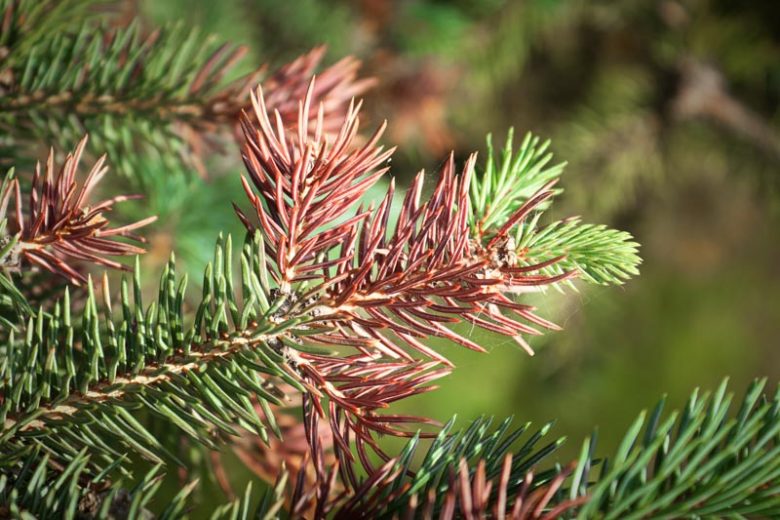
Conclusion
Early detection is key to managing these spring pests in BC. Regular inspection of trees during spring months can help catch infestations before they become severe. For large-scale forest management, contact the BC Ministry of Forests for guidance and support.
For homeowners dealing with these pests in residential settings, consulting with a certified arborist can provide targeted solutions that protect both your trees and the broader environment.
This article provides general information about common tree pests in British Columbia. Treatment recommendations may vary based on specific circumstances and regulations. Always follow product labels when using any pesticides.
